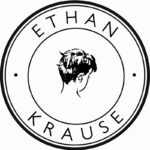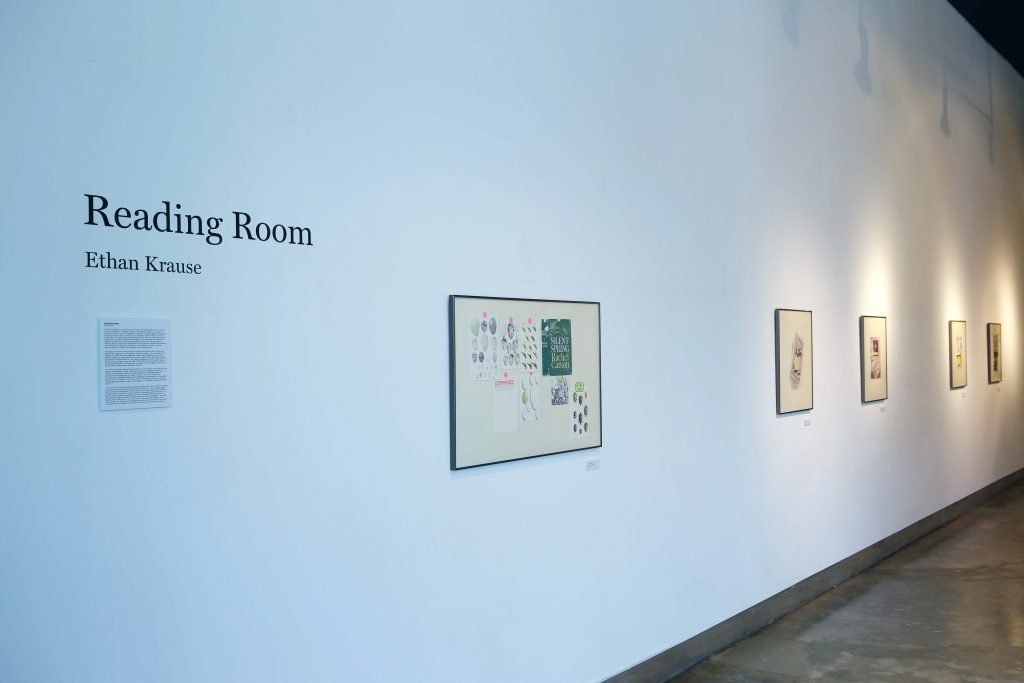
Kenilworth Square East Gallery, Milwaukee, WI
May 12- June 3, 2017
We seek knowledge in a world without fixed truths. Our understanding of reality is forever in flux. The compositions in “Reading,” a series of screen prints on paper, are in a state of sometimes awkward tension, the collage-like arrangements of images suggestive of something temporary, tenuous, ready to come apart or be rearranged. I began the series in late 2016, shortly before the Oxford English Dictionary declared “post-truth” the international word of the year. That a vaunted compendium of knowledge should concede the irrelevance of objectivity in public discourse felt weirdly appropriate, as this series is an interrogation of material culled from books and printed ephemera, playing with the possibilities of presentation and representation. These prints, however, are not a validation of Trumpian, post-truth discourse, but look to printed texts to argue for active, ongoing inquiry.
The imagery of the prints is held up with bits of printed tape, tacks and nails, a hierarchy of adhesives that suggests that not all arguments will hold up equally. I borrow techniques from collage, but also from still life—arrangements of objects often freighted with cultural and symbolic meaning. The component parts are printed roughly to their original scale, creating a simple trompe l’oeil, which reveals its “trick” almost immediately, and further breaks down into thousands of cyan, magenta, yellow, and black (CMYK) halftone dots. The viewer, primed by questioning the illusionism of the trompe l’oeil, is prepared to then investigate the illusionism of this commercial printing process, still widely used today.
The CMYK process here references the printing of my source material, but the scale of the dot patterns is large enough to quickly crumble under close scrutiny. Reading the prints, like reading a text, requires participation. The slight imperfections in registration that are a byproduct of hand-printing point to the gaps or elisions in any text or document. My repurposing and recombining highlights the incompleteness and permeability of our knowledge base. The prints of “Reading” are an attempt to enter into dialog with print culture, scanning and photographing material, arranging and rearranging it on a computer screen and returning it to print.
In the short story “The Library of Babel,” Jorge Luis Borges posits a library as infinitely complex as the universe. Libraries, with books alpha-numerically ordered on rows of shelves, suggest neat consensus and completeness, but every library, not just Borges’ philosophical construct, is an ongoing, open conversation. Libraries are spaces of debate and possibility. Moreover, our planet is a space of debate and possibility. The prints of “Reading” reflect the activity of the gnostic figures combing the shelves of Borges’ library, searching for knowledge in a world that seems to hold no fixed truths. In this “post-truth” era, the search for knowledge is more important than ever. Although we will inevitably fail to uncover final, fixed truths, active inquiry and the pursuit of knowledge remain essential to human life. Our quixotic quest continues.
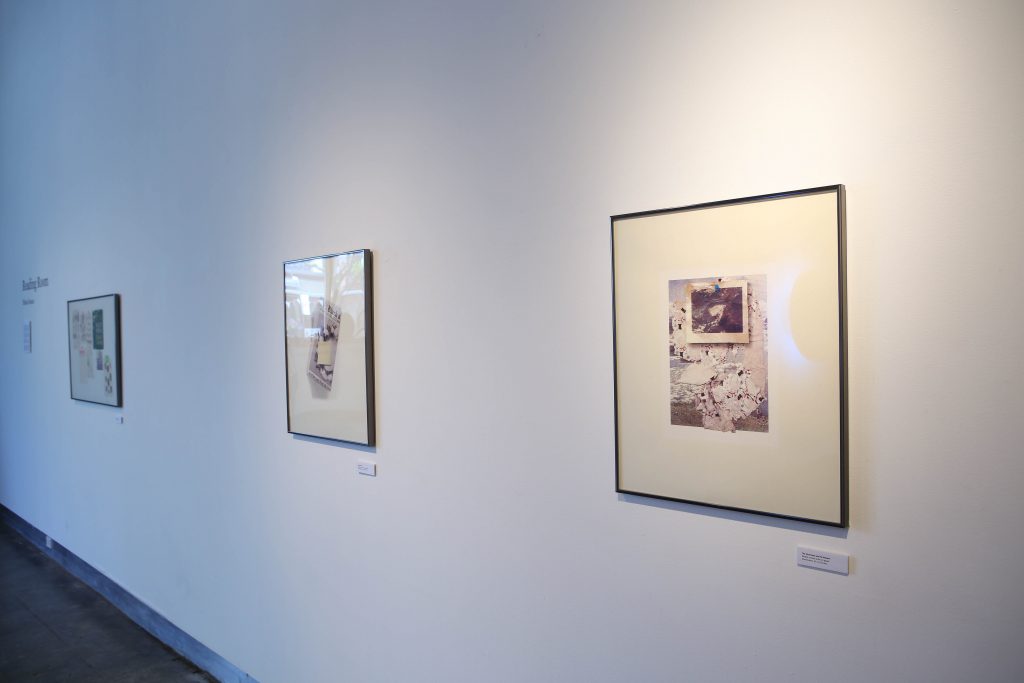
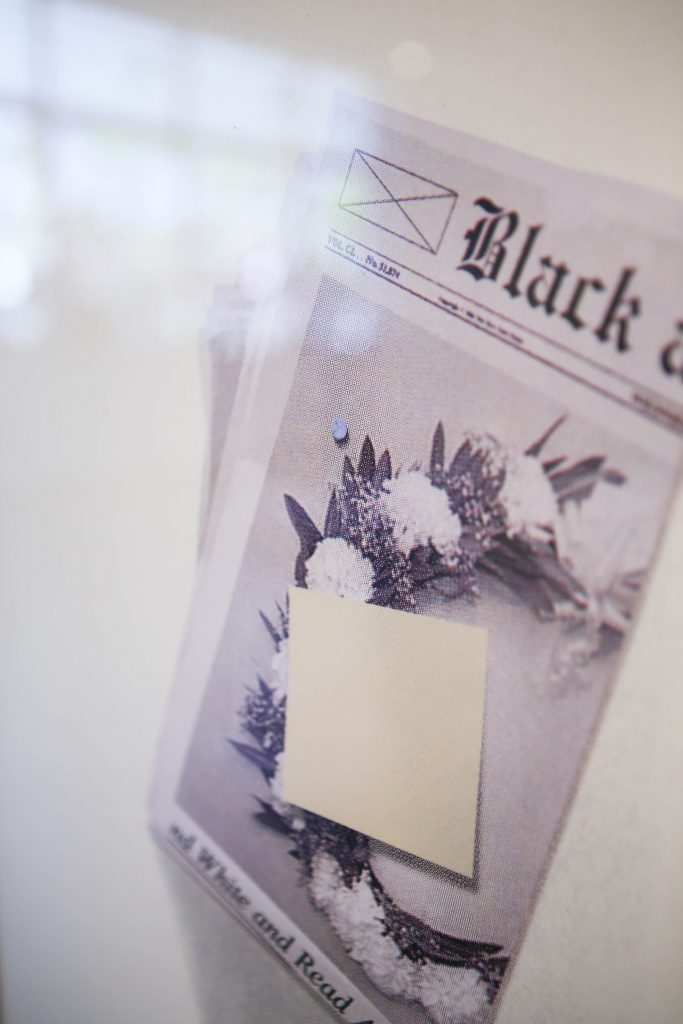
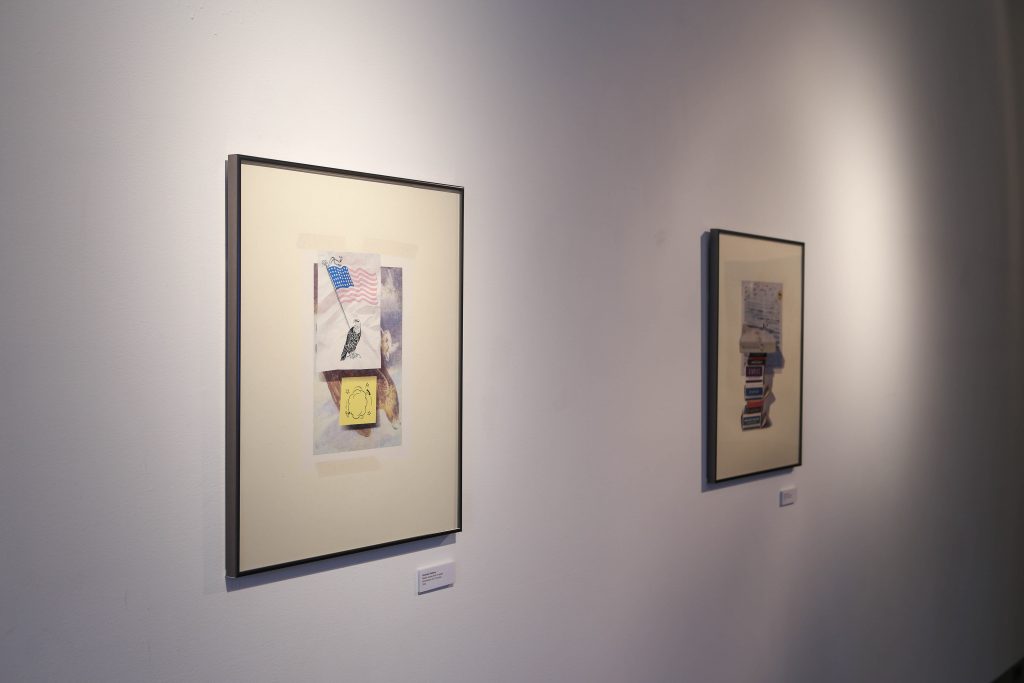
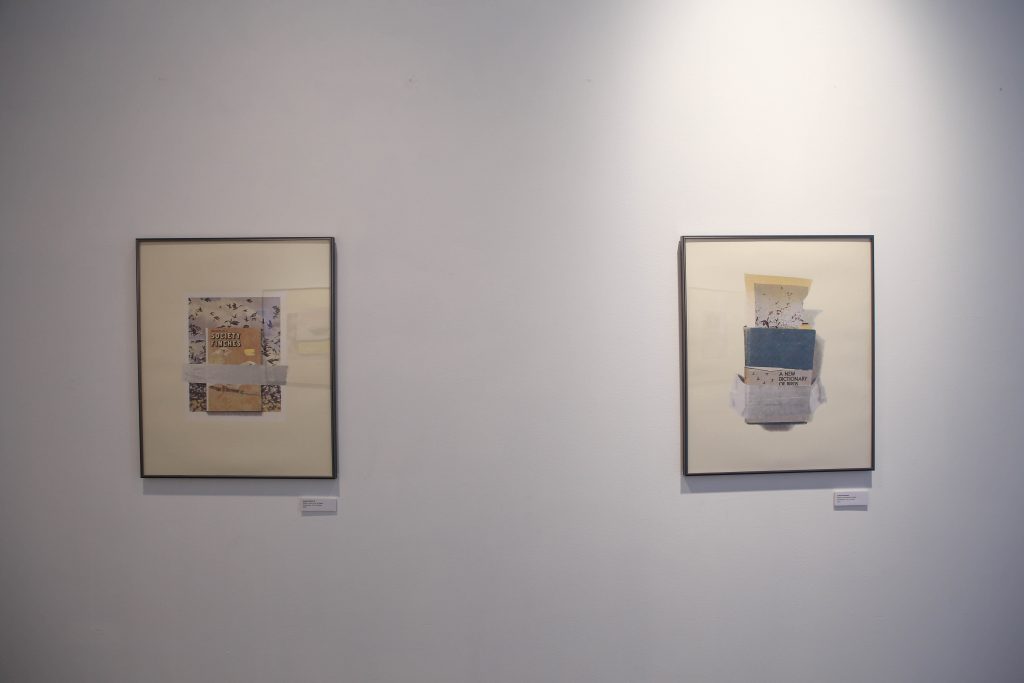
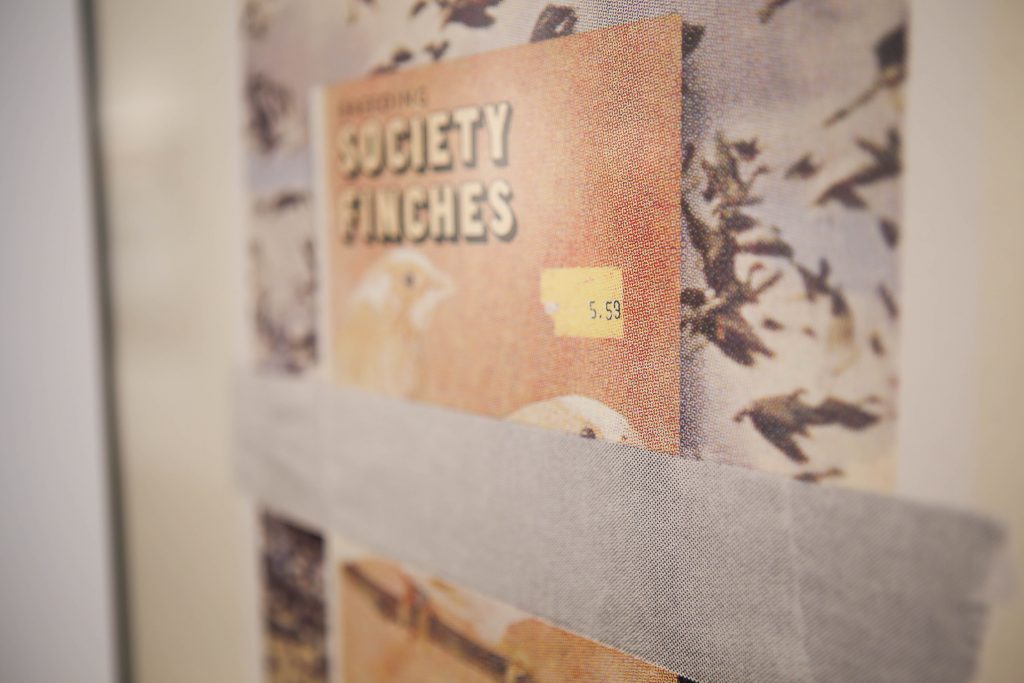
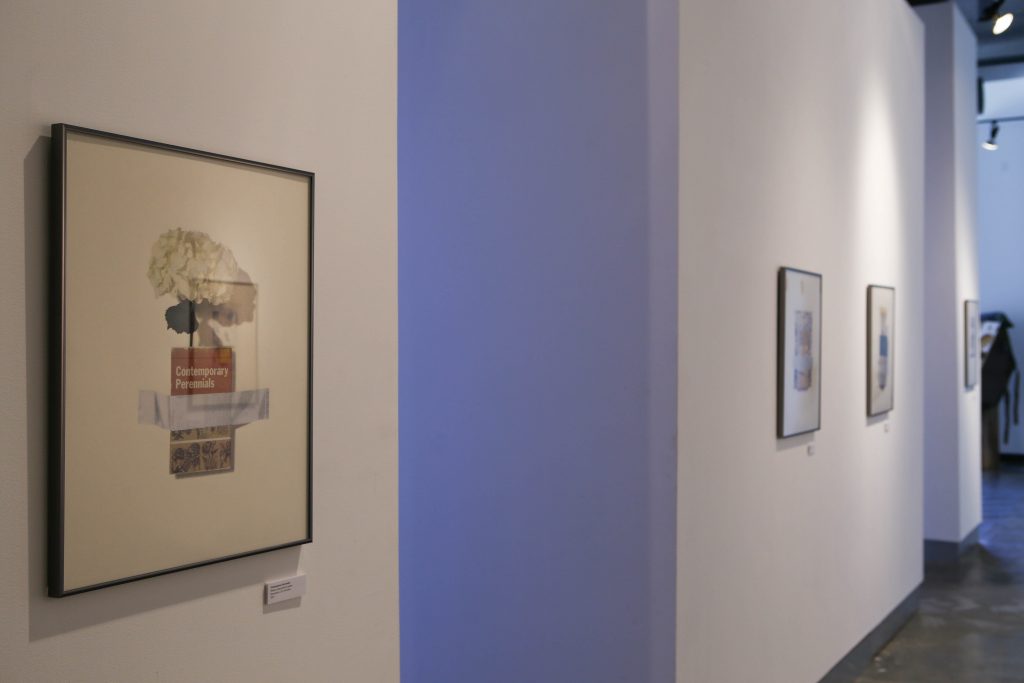
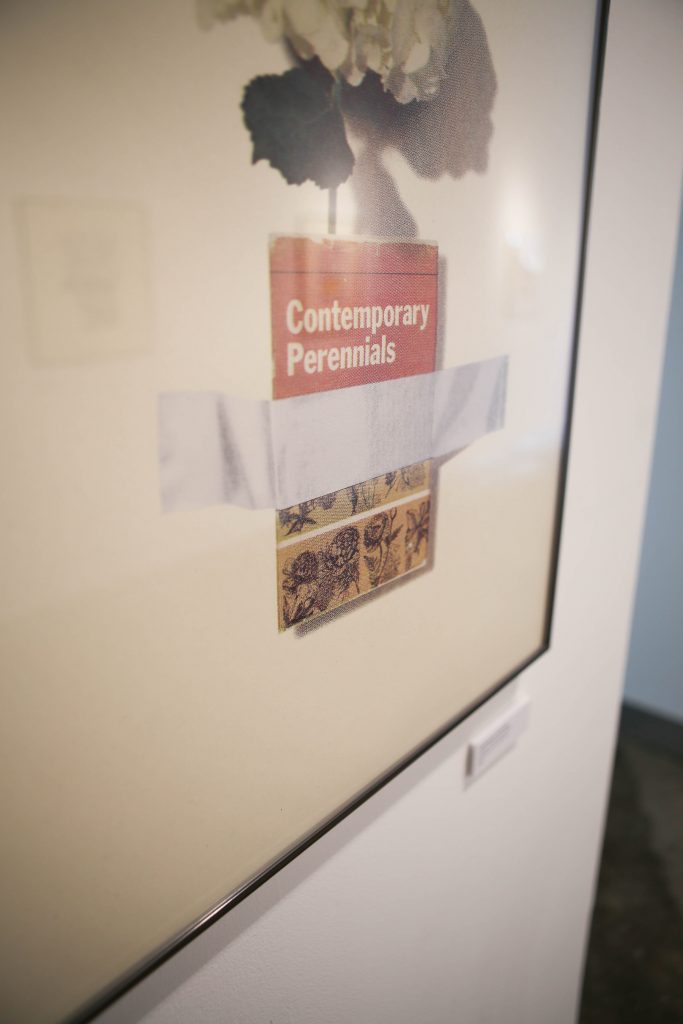
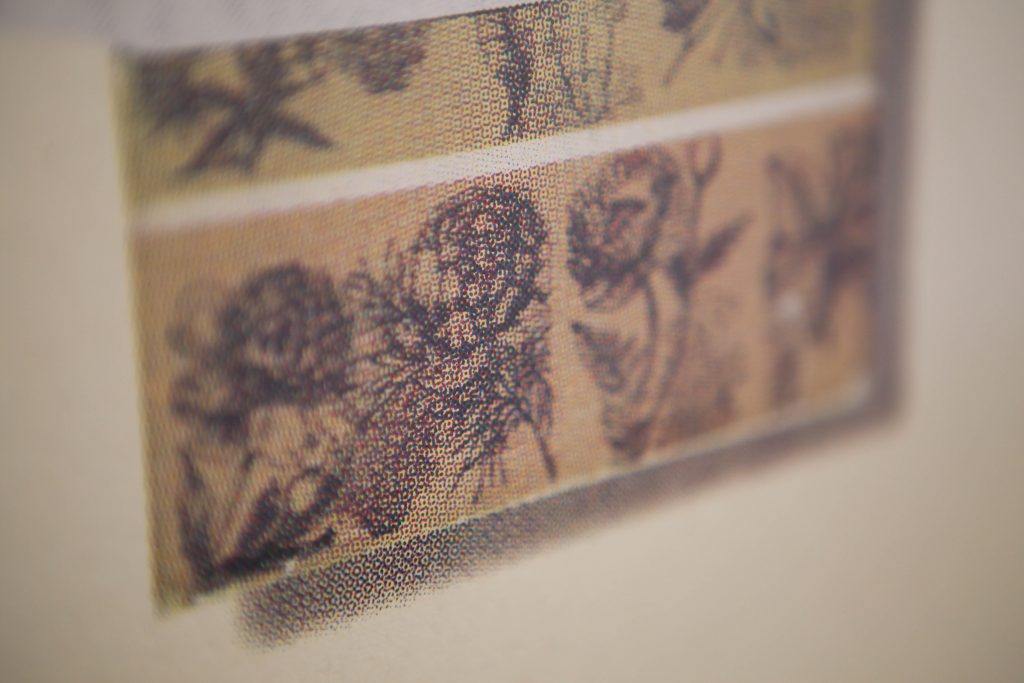
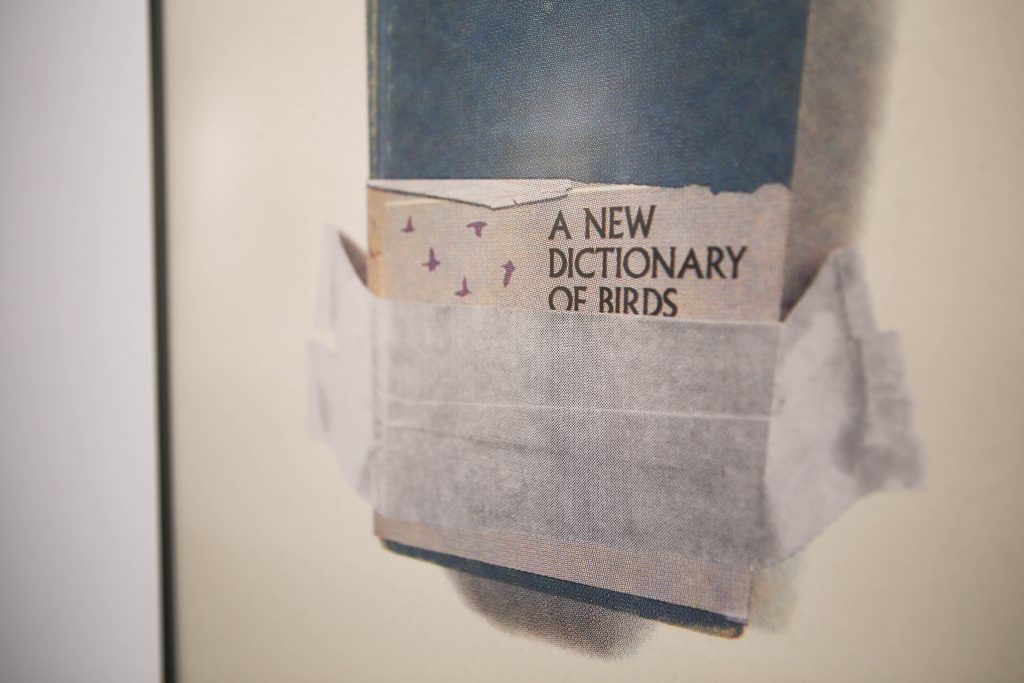
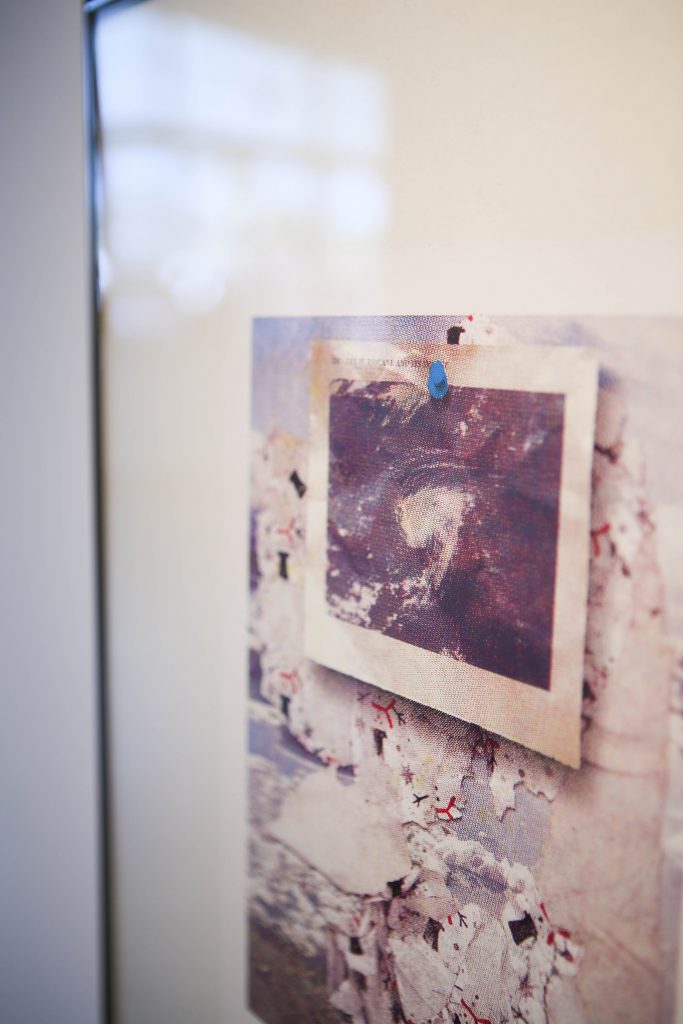
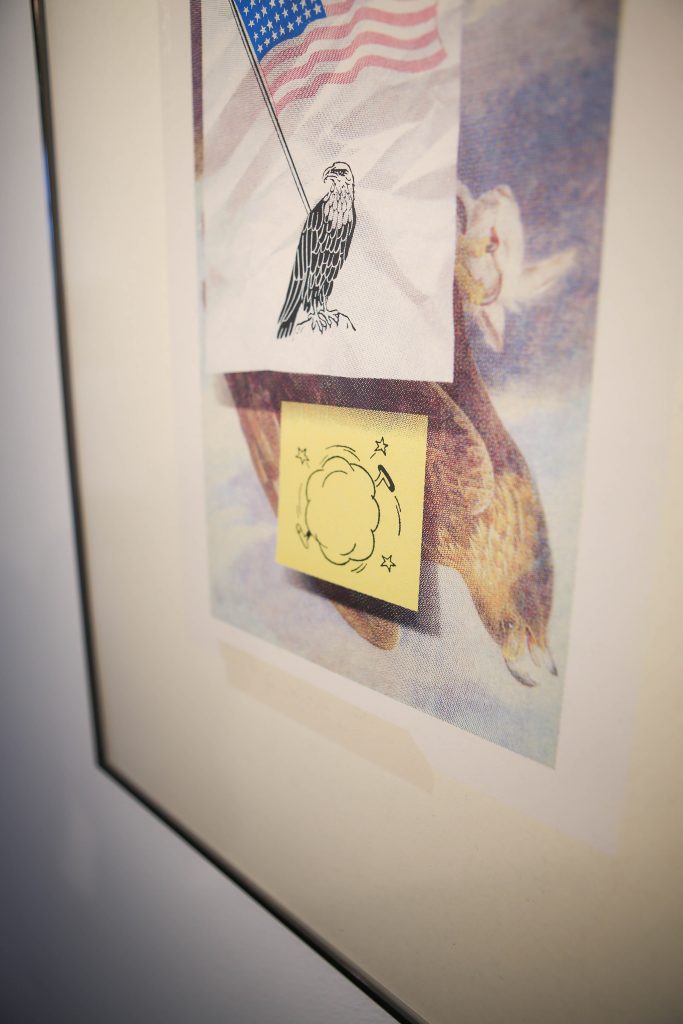
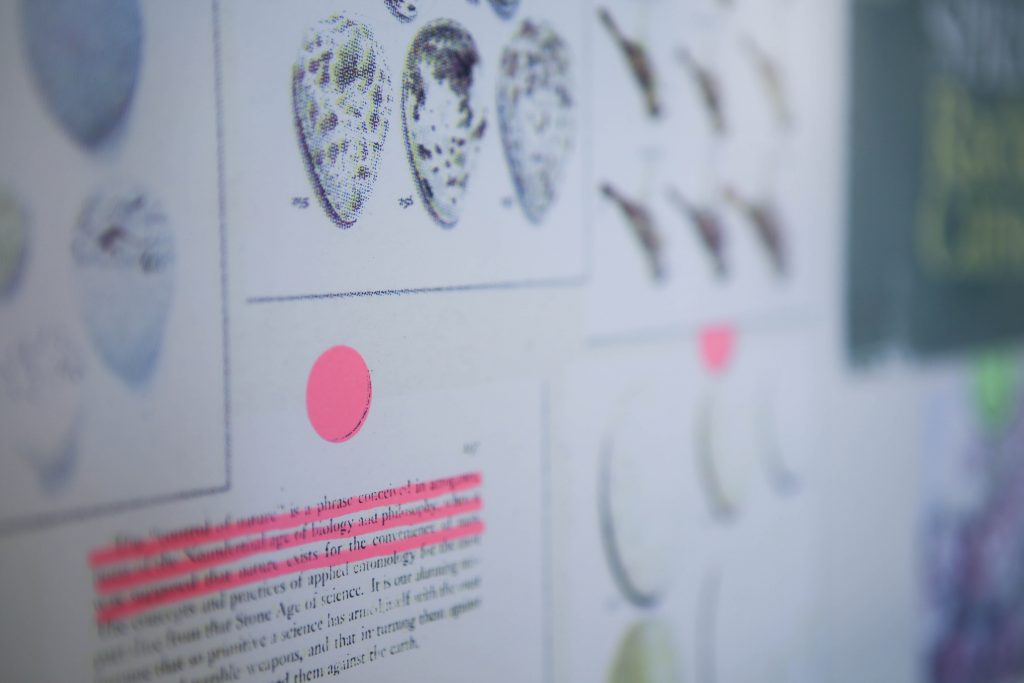
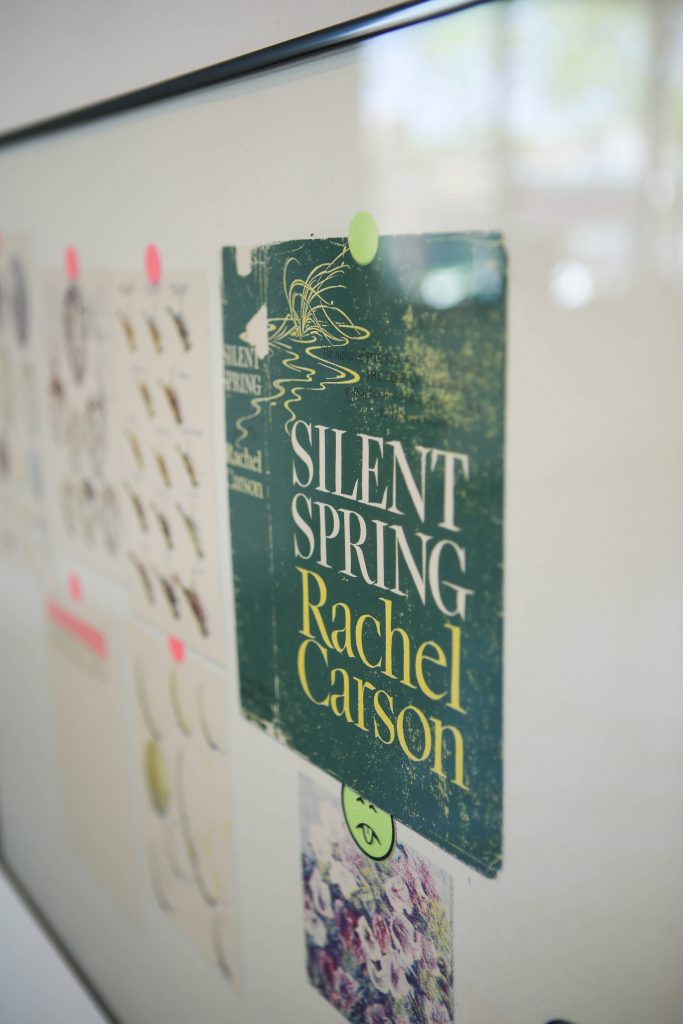
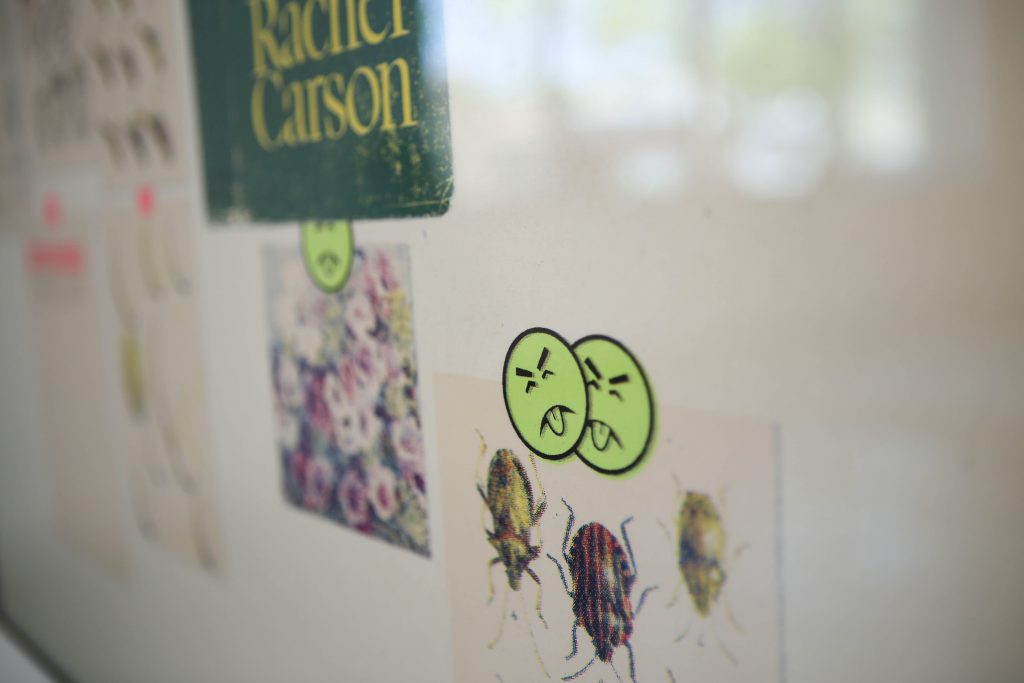
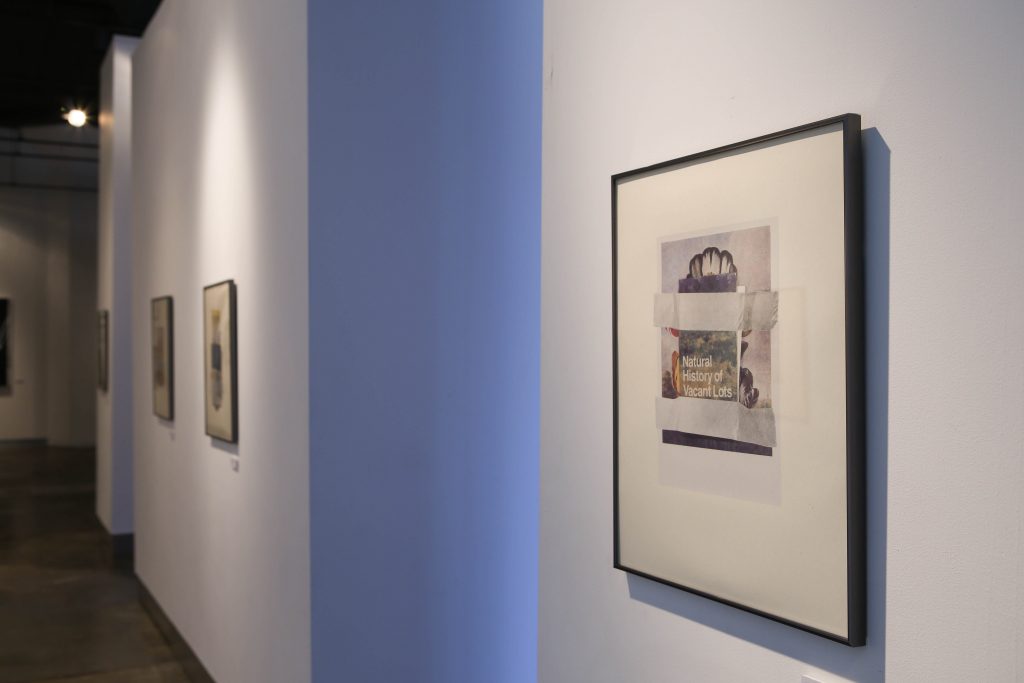
All installation photos by Patrick Stromme.
